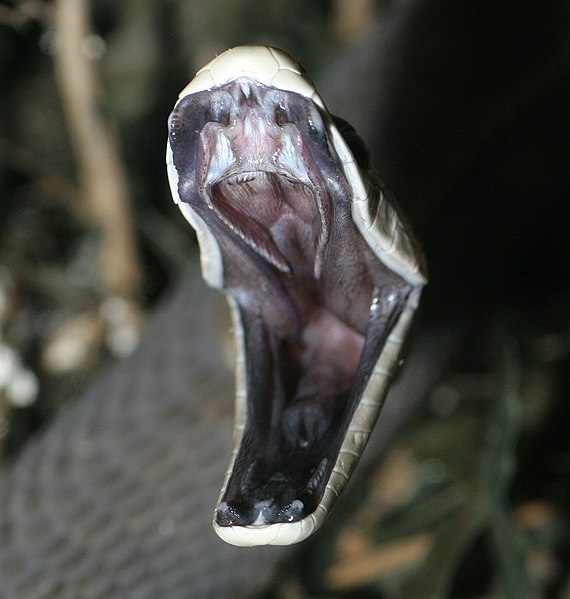As a small boy, I devoured the books of Messrs.’ Ditmars, Kauffeld, Whittaker, Sanderson and others who sought out snakes in their natural habitats. The formidable Black Mamba, (Dendroaspis polylepis), accorded respect by all, was given a special place of honor by legendary snake man C.J.P. Ionides in Mambas and Maneaters. Although I was eager to expand my snake hunting experiences, these authors convinced me that this longest of Africa’s venomous snakes was better observed than handled. Fate intervened, however, and I wound up working closely with what has been described as “Africa’s deadliest snake”. Accounts of the recent escape of a Black Mamba from the Pretoria Zoo brought an experience of my own back to mind…
Handling Mambas and Cobras
Zoo-based reptile keepers such as I handle thousands of venomous snakes over the course of their careers. A snake hook generally fits the bill for routine tasks. The Black Mamba, King Cobra and several related species, however, present special challenges, especially when they reach full size. Quick, high-strung, and seemingly more alert and intelligent than others, many Elapids (cobras, mambas and their relatives) are difficult to move via snake hooks….all old reptile keepers have their stories. You can read about my adventures with an escaped King Cobra in this article.
I was fortunate in having had the benefit of working with several older, well- experienced keepers, and had no illusions about “proving” myself when it came to cobras and mambas. I feel that “discretion is the better part of valor” where they are concerned, a belief confirmed by observations made in the course of responding to many snakebite emergencies over the years. Whenever possible, I relied upon shift cages or other “tricks” (please see article below) when I needed to move a mamba.
 That Reptile Blog – Reptile, Amphibian and Exotic Pet Care and Information
That Reptile Blog – Reptile, Amphibian and Exotic Pet Care and Information

